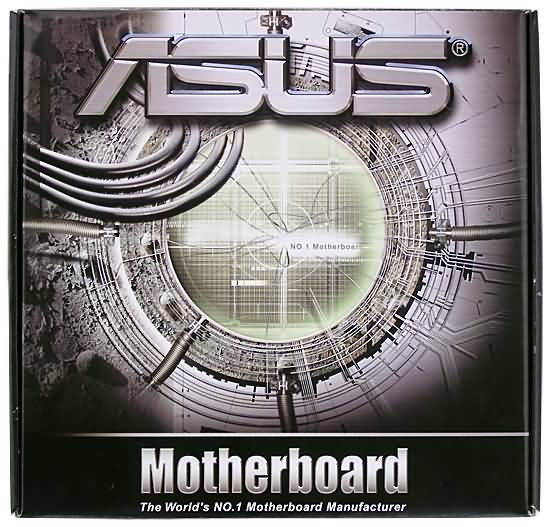ASUS P5GD1-VM Mainboard based on Intel 915G
|
Typical low end mainboard of the mATX form factor, which functionality is practically within the bounds of the chipset it uses. However, it's still a little expanded: perhaps, the Parallel ATA support for a low end mainboard still seemed important to ASUS, that's why the "on-chipset" PATA connector is supplemented by another one, connected to an external IDE-controller from ITE. It's hard to tell how justified this extension is. Even one Parallel ATA connector allows two devices, thus two connectors may be necessary only for the owners of three PATA storage devices, or for those, who as a matter of policy, do not want to connect two devices to the same channel. Still, "store is no sore", therefore everything will be up to the attraction of the price in the long run.

The PCB layout is common for the mATX form factor, where the dimensions are reduced to the detriment of the assemblage convenience. Access to jumpers may be hampered when the mainboard is in a case, their description is provided on the PCB. +5 V Standby on the mainboard is indicated by a green LED. The 4-phase switching voltage regulator of the processor incorporates one 1800 uF capacitor, four 1000 uF capacitors, and several ones of a lesser capacity. The PCB also contains voltage regulators for the PCI-E x16 bus (2x1000 uF) and for memory (4x1000 uF).
The PCB contains empty seats for a FireWire controller chip and its connectors. Mainboard dimensions - 245x245 mm ("wide" mATX, eight-screw mount, the bottom-left PCB edge may sag). The Winbond W83627EHF-A chip is used to monitor:
- CPU and memory voltage, +3.3 and +/-12 V
- RPM of 2 fans
- CPU temperature (by the embedded CPU sensor)
- Board temperature (by the on-board sensor)
Onboard ports, sockets, and connectors
- CPU socket (Socket 775)
- 4 x DDR SDRAM DIMM (differ by color, grouped in pairs)
- 1 x PCI-E x16 (with a latch)
- 1 x PCI-E x1
- 2 x PCI 32-bit / 33 MHz
- Power supply: standard EPS12V (24-pin) and 4-pin connector for 12 V
- 1 x FDD
- 1 x IDE (Parallel ATA) - in the chipset
- 1 x IDE (Parallel ATA) - in the additional controller
- 4 x SATA (Serial ATA) - all in the chipset
- 2 x USB 2.0 (for additional brackets)
- Connector for a case open sensor
- 1 x CD/DVD audio connector
- Headers for additional Audio-Outs and S/PDIF
- 2 fan headers (each with rpm control).
Back panel (left to right, blockwise)

- PS/2 mouse and keyboard
- LPT, 1 COM, D-Sub (VGA)
- 2 x USB
- 2 x USB and 1 x RJ-45 (Fast Ethernet)
- 3 x Audio (Center/Sub, Rear, Side)
- 3 x Audio (Mic-In, Line-In, Front)

Package Contents
- Standard design box
- Documentation: User's manual in English
- Cables:
- 1 x ATA66/100/133
- 1 x FDD
- 2 x SATA
- Rear panel bracket with 2 x USB and 2 x FireWire
- Rear panel bracket
- CD with software:
- mainboard drivers
- Adobe Acrobat Reader
- PC-Cillin 2002
- ASUS Live Update
- ASUS PCProbe
- ASUS Screensaver
- DirectX 9.0B
Minimum bundle, to be frank. Mind it, it's a low end mainboard. They could have included a newer DirectX version though, 9.0C was not released yesterday... Integrated Controllers
- Audio, based on the HDA codec Realtek ALC861 supporting 7.1 surround sound audio with front line-in/out and S/PDIF jacks
- Network, based on the Intel 82562EZ chip (10Base-T/100Base-TX)
- IDE (Parallel ATA) based on the ITE IT8211F chip supporting ATA133 (in fact the chip supports 2 channels, but the mainboard contains only one channel).
General results
| FR passband ripple (from 40 Hz to 15 kHz), dB: |
+0.14, -0.17 | Very good |
| Noise level , dB (A): |
-92.9 | Very good |
| Dynamic range, dB (A): |
92.5 | Very good |
| THD, %: |
0.0039 | Very good |
| Intermodulation distortions, %: |
0.011 | Very good |
| Channel crosstalk, dB: |
-93.1 | Excellent |
General performance: Very good.
Proprietary technologies
- ASUS CrashFree2 BIOS (restoring BIOS from a floppy or a bootable CD)
- ASUS Q-Fan2 Technology (controlling the fan speed depending on the temperature)
- ASUS EZ Flash (updating BIOS without loading the OS)
- ASUS MyLogo 2 (displaying a graphical logo instead of a regular BIOS logo)
Settings
| Jumpers and switches |
Clear CMOS jumper |
| Jumpers to enable system wake up on keyboard or USB devices |
| PS/2 keyboard power jumper |
| Fan power jumper |
| Jumpers to enable/disable SMBus 2.0 support |
| In BIOS v2.51 from AMI | Memory timings | + |
CAS Latency, RAS Precharge, RAS to CAS Delay, RAS Precharge, Burst Length |
| Memory frequency selection | + | Auto, DDR2-400, DDR2-533, DDR2-600 |
| PCI/PCI-E x1 bus setup |
– | |
| PCI/PCI-E x1 frequency divider setup |
– | |
| PCI IRQ manual assignment | – | |
| FSB frequency setup | – |
|
| CPU multiplier | + |
x8-x28 |
| CPU core voltage control |
– | |
| Memory voltage control |
– | |
| Chipset voltage control |
– | |
| PCI-E bus voltage control |
– | |
We used BIOS 1005, the latest available BIOS version at the time of our tests.
Preliminary test results
| |
ASUS P5GD1-VM |
Intel D915GUX |
| Return to Castle Wolfenstein, 800x600x32 |
236 |
233 |
| Adobe Photoshop 7.0, script execution |
00:08:23 |
00:08:21 |
| DivX 5.1 Pro encoding |
00:07:22 |
00:07:21 |
| 7-zip archiving |
00:07:22 |
00:07:38 |
References
Write a comment below. No registration needed!
|
|
 |
|
|
|



